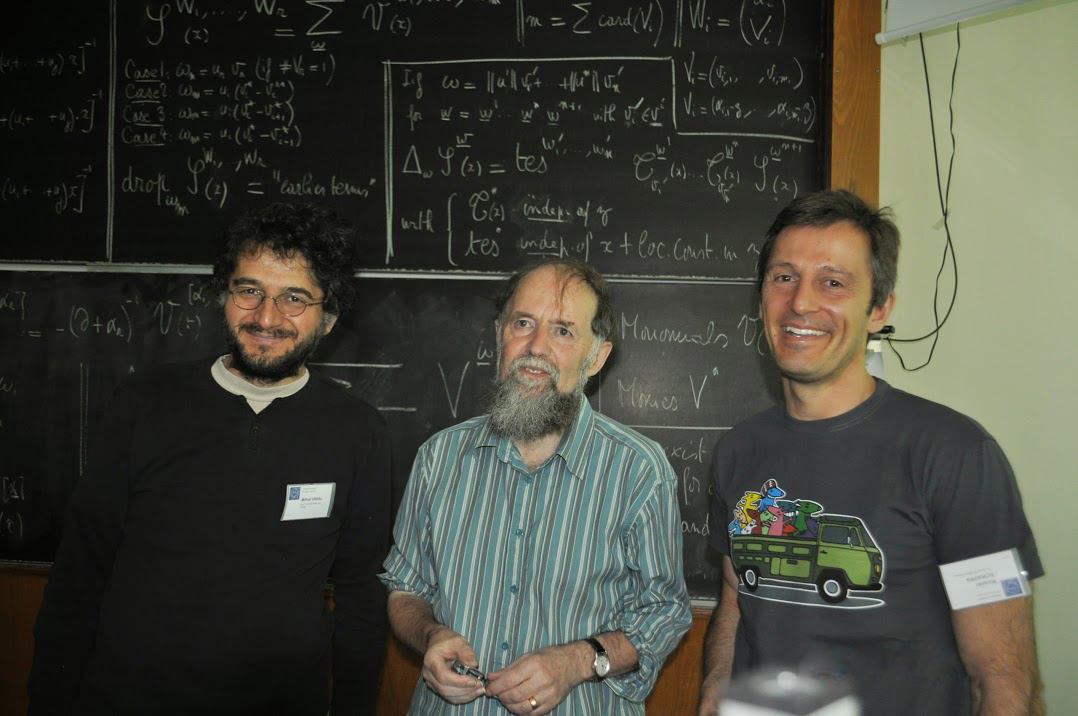CERN TH Institute on “Resurgence and Transseries in Quantum, Gauge and String Theories
A CERN TH Institute on “Resurgence and Transseries in Quantum, Gauge and String Theories” was held at CERN from 30 June to 04 July.
The goal of this CERN TH-Institute was to bring together mathematicians working on aspects of asymptotic analysis and theoretical physicists working on gauge theories and string theory, where methods from resurgence theory are promising.
Resurgent analysis and transseries have been applied with success to study the asymptotics of ordinary and partial differential equations in the past couple of decades, but had so far not been applied to problems arising in Theoretical Physics (although some of the key ideas were already present in some form in the Physics community for a long time). These methods, pioneered by mathematicians Dingle and Ecalle in the 1960-80s and developed by many since then, allow to reconstruct the global, non-perturbative solution to a wide range of problems where only an asymptotic series approximation is available. They could therefore prove very useful for understanding interacting quantum field theories such as QCD, where the standard perturbative expansion in terms of Feynman diagrams produces a divergent, asymptotic series which fails to capture non-perturbative effects. These methods may also be of interest in string theory, where a fundamental non-perturbative definition is not available and the perturbative genus expansion is the only available tool (supplemented with various dualities which conjecturally relate different perturbative expansions).

Jean Ecalle (Université Paris 11 Orsay), one of the founding fathers of the theory of resurgenceorganizer standing between Mithat Unsal (SFSU San Francisco, left) and Ricardo Schiappa (IST Lisbon, right), two of the organizers of this workshop.
A key question is of course whether the physical observables in quantum field theory and string theory fall into the class of resurgent functions where these methods are directly applicable. This is known to be the case for 0+1-dimensional quantum field theories, otherwise known as quantum mechanics, where resurgence is key in ensuring the cancellations of ambiguities in the semi-classical WKB expansion. In particular, for quantum mechanics with double-well type potentials, the ambiguities in the divergent perturbative series around one vacuum are known to cancel against ambiguities in the instanton/anti-instanton sector, by the so called Bogomolny-Zinn-Justin (BZJ) mechanism. The applicability of these methods to interacting quantum field theory was unclear until recently, due to the existence of renormalon ambiguities, which dominate over instanton effects and had no semi-classical realization.
Recently, it was understood that a rather large variety of gauge and field theories (either supersymmetric or not) may be continued to weakly coupled calculable regimes, by using circle (non-thermal) compactification where one has control over both perturbative and nonperturbative dynamics. This idea of continuity, combined with a generalization of the BZJ mechanism to QFT, permits a way to cancel the renormalon ambiguities at least in the semi-classical domain, and give a physical interpretation thereof. In general, resurgence is expected to provide a more refined classification of nonperturbative saddles as compared to the standard topological classification; and predict the existence of "generalized" instanton sectors and, in some cases, gives an interpretation to complex saddles that the path integration does not pass through.
Both of these are of significant importance in our understanding of QFT. The second item is related to the studies of analytic continuation of path integrals, and performing path integration over different cycles. These latter methods are also beginning to find applications in numerical Monte Carlo simulations, in problems related to sign problems in QCD, and other theories.
The interdisciplinary nature of this CERN TH-Institute is quite remarkable, as it brought together theoretical physicists and leading mathematicians (including one of the founders of the theory of resurgence, Prof. Jean Ecalle). The basic mathematical methods of resurgence, transseries and hyperasymptotics were introduced and the most recent developments in applying these methods to gauge theories and string theory were reviewed. The talks were recorded and are available on-line, including Prof. Michael Berry's colloquium on " Divergent series: from Thomas Bayes’s bewilderment to today’s resurgence via the rainbow". It is hoped that this vibrant workshop will foster new progress in applying resurgent methods to physical problems, and that mathematicians will often return to CERN.
You can find more information about this CERN TH-institute here.
